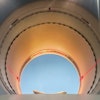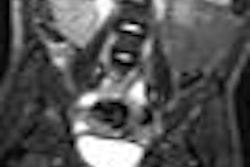BOSTON - Skeletal scintigraphy with F-18 sodium fluoride (F-18 NaF) is a safe and effective way to diagnose skeletal disorders in children and could be used instead of bone SPECT exams, according to research presented on Wednesday at the Society for Pediatric Radiology (SPR) meeting.
Skeletal PET bone imaging fell into disuse in the 1970s after SPECT imaging with technetium sodium chloride was introduced, said Dr. Frederick Grant of the division of nuclear medicine at Children's Hospital Boston. But tight supplies of technetium, caused by the ongoing global shortage of molybdenum, have many nuclear imaging specialists re-examining the technology.
Children's Hospital Boston began to use F-18 NaF scintigraphy routinely in 2005 and has had very positive experiences, Grant said. In his SPR presentation, he reported results from a retrospective study of 484 patients between infancy and 19 years of age who had the procedure between April 2005 and March 2010, with skeletal scintigraphy showing positive findings for 57%.
In the study, 87% of patients had the exam due to back pain -- often due to sports injuries -- and, of these, 186 of 350 young athletes had positive exam findings. Other indications included back pain after trauma (13 patients with 54% positive findings), persistent back pain after spinal fusion surgery (33 patients with 61% positive findings), and metastatic disease. In most cases, images were of higher resolution than with conventional SPECT, Grant said.
A total of 46 children younger than 2 who had indications of nonaccidental trauma had positive findings 89% of the time. Grant attributed this to selection bias, as these were patients suspected of being victims of child abuse. Because of their very young age, these children required sedation for the procedure.
For all patients, PET was performed 30 minutes after administration of 21 MBq per kg (with a maximum of 148 MGq) F-18 NaF. Grant recommended that patients be well hydrated. The imaging procedure took 30 minutes or less, compared to 60 to 90 minutes for a technetium bone SPECT exam, requiring an update period of up to three hours.
"The shorter procedure time has improved department workflow, and it enables us to obtain a higher utilization rate for the PET scanner," Grant said. "By educating medical doctors of large health insurance companies, we also get reimbursement for this. The only payor we haven't had any success with is the Centers for Medicare and Medicaid Services, because Medicare rules strictly apply to Medicaid patients."
By Cynthia E. Keen
AuntMinnie.com staff writer
April 15, 2010
Related Reading
PET recommended for skeletal trauma to identify child abuse, March 24, 2010
Siemens PETNet offers free NaF-18, March 19, 2010
Copyright © 2010 AuntMinnie.com




















